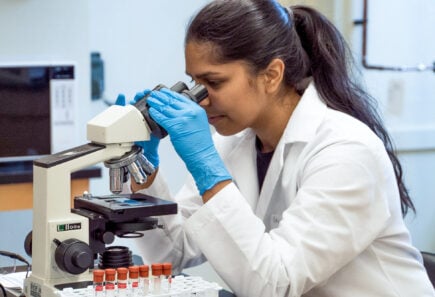
State of the Industry Report: Cultivated meat and seafood
This report covers the commercial landscape, consumer insights, investments, regulatory developments, and scientific progress in the cultivated meat and seafood industry.

Explore new data and industry insights
Executive summary
In the history of food and agriculture, 2023 was a milestone year—the year that real animal meat made without animals was first approved for sale in the world’s largest economy. For the first time, U.S. consumers ordered cultivated meat at two restaurants helmed by world-renowned chefs.
Additionally, cultivated meat broadened into new settings in Singapore, including the first butchery where it was on display and served in the adjoining bistro. And just after 2023 ended, there was more exciting news for cultivated meat: in January 2024 Israel became the third country to advance the approval of cultivated meat sales, and the first to advance the approval of cultivated beef. Fresh consumer insights and market analysis pointed to growing international interest in cultivated meat. New partnerships and global alliances formed to advance the science and scaling of cultivated meat.
Report highlights
- Industry partnerships
- Infrastructure developments
- Fresh consumer insights
- Private investment data and insights
- New scientific and technological research
- Public investments
- Regulatory updates
- Industry outlook
Key developments
The State of the Industry Report: Cultivated meat and seafood provides a comprehensive global analysis of the growing cultivated meat and seafood industry including new partnerships, consumer insights, investments, scientific progress, and government and regulatory developments. Highlights featured in the report include:
Commercial landscape
Path-to-market milestones
- In the United States, cultivated chicken products from UPSIDE Foods and GOOD Meat debuted at two restaurants.
- Huber’s Butchery in Singapore became the world’s first butchery to sell cultivated meat when it began carrying GOOD Meat’s cultivated chicken in its bistro.
- In January 2024, Israel became the third country in the world to advance the approval of cultivated meat (Aleph Farms’ cultivated beef product) and the first country to advance the approval of cultivated beef.
- Around the world, the number of publicly announced cultivated meat companies (focused primarily on cultivated meat inputs or end products) rose to 174 in 2023, up from 166 in 2022.
- In 2023, 10 new cultivated meat facilities opened across Asia, Australia, Europe, North America, and the Middle East. Two large-scale plants—Mosa Meat’s 30,000-square-foot facility in the Netherlands and CellX’s factory in Shanghai—opened in 2023.
- ADM partnered with Believer Meats to refine and expand the cultivated meat production process.
- Large company involvement in cultivated meat deepened, and Danone and Central Bottling Co.—which owns Coca-Cola Israel—both invested in cultivated milk.
Investments
All-time investment reaches $3.1 billion
- Cultivated meat and seafood companies raised $225.9 million globally in 2023, bringing the total for the industry (since 2013) to $3.1 billion—a fraction of the investments flowing into other technologies and innovations, like renewable energy, with the potential to reduce emissions and address climate goals.
- While the 2023 raises represent a sizable decrease from the $922.3 million raised in 2022, this mirrors the broader tepid private funding environment. In 2023, companies and investors alike faced elevated inflation, rising interest rates, and a mixed economic outlook. As a result, global venture funding fell 42% year-over-year (YOY) in 2023 to its lowest levels since 2017 (for context, investments in food tech startups declined by 61% YOY).
- The largest deal raised in 2023 was Meatable’s $35 million Series B round. Meanwhile, the number of unique investors in cultivated meat and seafood totaled 111 in 2023 compared to 204 in 2022.
Science and technology
Growing scientific ecosystem
- Breakthrough research showed promising improvements to the taste, texture, and nutritional composition of cultivated meat, bringing it ever closer to product parity with conventional meat.
- The examination of scalability and bioprocess design included one notable study that highlighted several scenarios to bring cultivated meat to mainstream markets at price parity with conventional meat by reducing media costs, improving biomass yields, utilizing significantly larger bioreactors, and exploring hybrid product approaches.
- Multiple studies demonstrated that cell culture media can be produced at a much lower cost and with much less environmental impact using non-animal ingredients and food-grade components.
- The Alt Protein Project (APP) welcomed 24 new chapters (including expansions into countries where APP was not previously represented, such as Brazil, Japan, Malaysia, Portugal, Switzerland, and Turkey). Tufts University became the first in the United States to offer an undergraduate minor in cellular agriculture.
Government and regulation
New public investment and governmental support for cultivated meat and seafood
- The United States, China, the United Kingdom, Japan, Israel, and more supported the creation of new cultivated meat infrastructure and market development.
- A report from the United Nations Environment Programme (UNEP) focused on alternative proteins, including cultivated meat’s potential to benefit the environment and public health.
- The United Kingdom led 2023 cultivated meat funding announcements with an allocation of £12 million ($15 million) for a new research hub at the University of Bath followed by an estimated £3.4 million ($4.3 million) for seven research projects on cultivated meat.
Get fresh insights sent to your inbox!
The Alternative Protein Opportunity is a tool for food industry insiders and includes sales, consumer, and investment data as well as distribution, science, policy updates and other timely insights. This newsletter is sent monthly. You’ll also receive bulletins about events, resources, and reports from GFI’s experts.
"*" indicates required fields
Find companies focused on cultivated meat and seafood
These companies focus primarily on cultivated meat and seafood. This database is dynamically updated; the total number of companies may differ slightly from what has been reported in the State of the Industry Report as we continuously improve our dataset. This list is intended to be as comprehensive as possible, but should not be considered exhaustive. You can learn more about these companies in our company database.
Are we missing something? Let us know about an update to a company’s record by filling out our company database edits form or submit a new company using this form.
Find cultivated meat and seafood production facilities
These production facilities have cultivated meat or seafood production capacity. This database is dynamically updated; the total number of facilities may differ slightly from what has been reported in the State of the Industry Report as we continuously improve our dataset. This list is intended to be as comprehensive as possible, but should not be considered exhaustive.
Are we missing something? Let us know by filling out this form to add a cultivated meat or seafood-focused production facility to the database.

Download our at-a-glance summary
Don’t have time to read the full report? Check out our summary for a quick view of the highlights and key data points from our 2023 State of the Industry report for cultivated meat and seafood.
Meet the authors

Elliot Swartz, Ph.D.
PRINCIPAL SCIENTIST, CULTIVATED MEAT
Elliot Swartz analyzes scientific progress and bottlenecks in cultivated meat.
Areas of expertise: cultivated meat: cell culture media, costs, and environmental impact

Faraz Harsini, M.Sc., Ph.D., DipACLM
SENIOR SCIENTIST, BIOPROCESSING
Faraz analyzes how best to scale the cultivated meat industry and ensure that products can enter and grow in the marketplace as quickly as possible.
Areas of expertise: biotechnology, cultivated meat, technical analysis and research

Claire Bomkamp, Ph.D.
LEAD SCIENTIST, CULTIVATED MEAT & SEAFOOD
Claire Bomkamp is focused on cultivated seafood and driving forward GFI’s Sustainable Seafood Initiative.
Areas of expertise: the science and technology of cultivated seafood, cultivated seafood startups, research, and university programs, scaffolding, science communication, fish puns.











